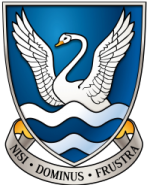Sentinus – Insight into Engineering
Bombardier/Shorts Aerospace
Before entering Bombardier on work placement, I had very little, next to no knowledge on the manufacturing process involved within aircraft parts, such as: the fuselage, wings, nacelles. Bombardier in Northern Ireland do not build complete aircrafts but will assemble many of their parts and ship them to their other plants across the world in Mexico, Canada and China, where they will complete the aircraft.
At the moment, in Canada, Bombardier are testing their new C Series planes which make extensive use of a composite material known as carbon fiber. Bombardier Aerospace have recently opened a new factory with one billion pounds worth of investment, for the development of their C Series planes and research on the use of carbon fiber aircraft parts. I found this area of Bombardier fascinating and have been told about how far ahead they are on research of carbon fiber material as a replacement for the conventional aluminium alloy. They are replacing this because the same amount of strength can be gained from the layer build of carbon fiber as aluminium but is much lighter and therefore saves on fuel. I also spent much of my time there on their older factory floors such as “04” and the machine shop floor, as well as being able to see the assembly line of some of their C series and business jets.
From spending time in these factories I was able to see so many stages of the process that I had previously been oblivious to. This included how they can strengthen a material by firing a specific amount of tiny steel balls at it, so that when fired at the correct speed they will cause a pressure build up and strengthen the metal. Another technique was FPI, fluorescent penetrant inspection, which was the use of luminous spray paint over an aircraft part. This was then washed off and a UV light was used to detect any paint left that would ultimately display any flaws. Also in the machine shop floor I was able to see how they clean the aluminium parts using acids and dry them in waters of around 80 degrees Celsius; and finally to see how the inspectors used different measuring instruments, including a coordinate measuring machine (that can check each part has the correct x,y and z coordinate size from a specific point), to ensure that the pieces were correctly made. The time spent in Factory “04” showed me how the metal framework or skins were shaped using rollers and how primers were used before the paint was put on to prevent corrosion of the metal.
Bombardier was a good opportunity to see the many different processes of aircraft manufacturing within methods, design, quality and research.
Steffi McCormick, Year 13




